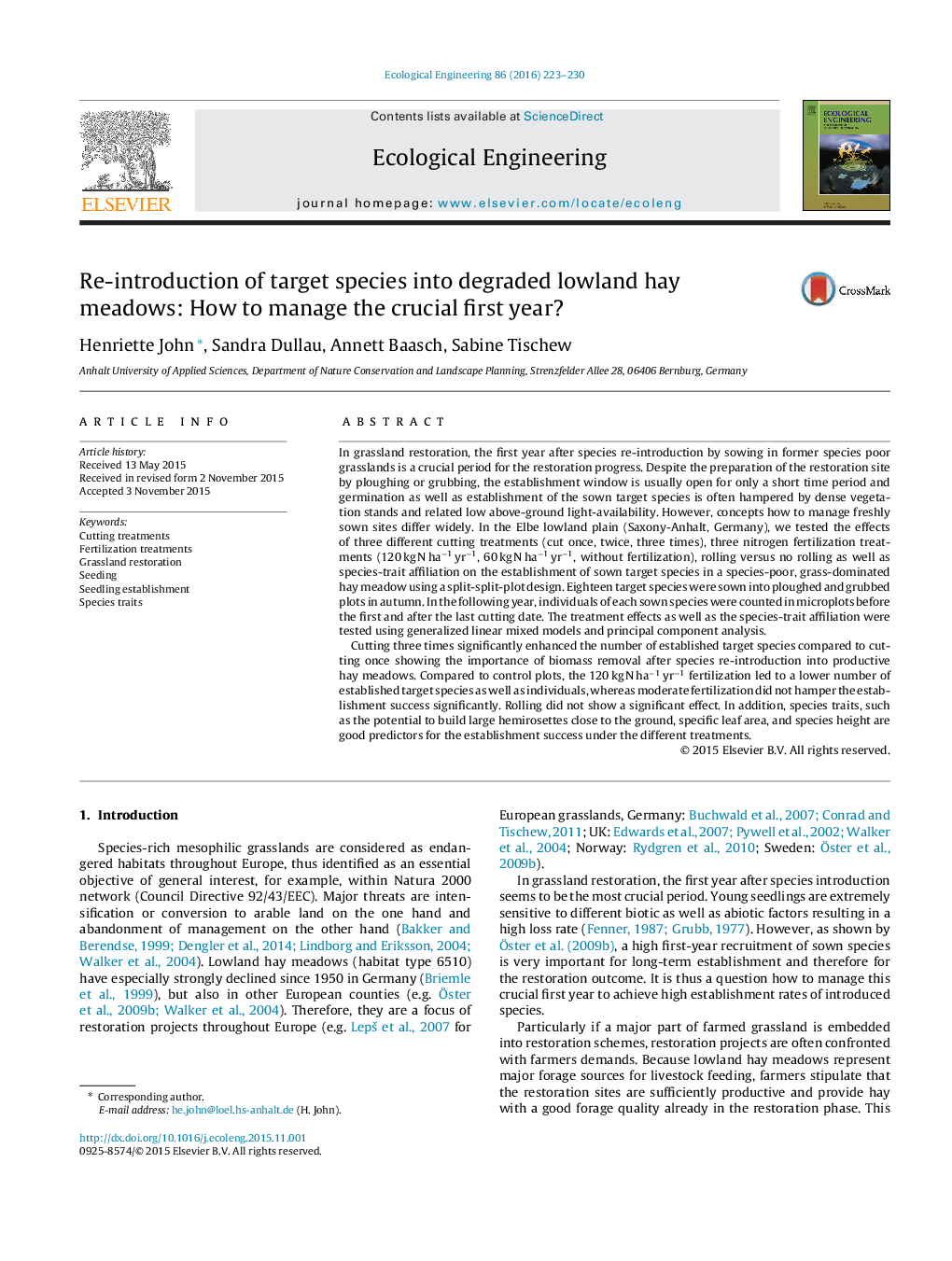| کد مقاله | کد نشریه | سال انتشار | مقاله انگلیسی | نسخه تمام متن |
|---|---|---|---|---|
| 4388933 | 1618013 | 2016 | 8 صفحه PDF | دانلود رایگان |
• We tested species introductions under practice-oriented management conditions.
• Effects of cutting, fertilization and rolling on species establishment were studied.
• Three cuts without fertilization enhanced the 1st year target species establishment.
• Moderate N fertilization is an acceptable compromise in restoration practice.
• Species traits are predictors of establishment success under different treatments.
In grassland restoration, the first year after species re-introduction by sowing in former species poor grasslands is a crucial period for the restoration progress. Despite the preparation of the restoration site by ploughing or grubbing, the establishment window is usually open for only a short time period and germination as well as establishment of the sown target species is often hampered by dense vegetation stands and related low above-ground light-availability. However, concepts how to manage freshly sown sites differ widely. In the Elbe lowland plain (Saxony-Anhalt, Germany), we tested the effects of three different cutting treatments (cut once, twice, three times), three nitrogen fertilization treatments (120 kg N ha−1 yr−1, 60 kg N ha−1 yr−1, without fertilization), rolling versus no rolling as well as species-trait affiliation on the establishment of sown target species in a species-poor, grass-dominated hay meadow using a split-split-plot design. Eighteen target species were sown into ploughed and grubbed plots in autumn. In the following year, individuals of each sown species were counted in microplots before the first and after the last cutting date. The treatment effects as well as the species-trait affiliation were tested using generalized linear mixed models and principal component analysis.Cutting three times significantly enhanced the number of established target species compared to cutting once showing the importance of biomass removal after species re-introduction into productive hay meadows. Compared to control plots, the 120 kg N ha−1 yr−1 fertilization led to a lower number of established target species as well as individuals, whereas moderate fertilization did not hamper the establishment success significantly. Rolling did not show a significant effect. In addition, species traits, such as the potential to build large hemirosettes close to the ground, specific leaf area, and species height are good predictors for the establishment success under the different treatments.
Journal: Ecological Engineering - Volume 86, January 2016, Pages 223–230
